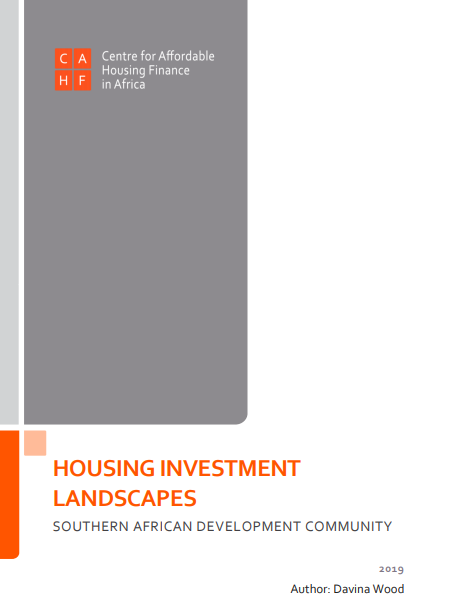Housing Investment Landscapes
Southern African Development Community (SADC)

This country report forms part of The Centre for Affordable Housing Finance’s Investor Programme which aims to reduce key information asymmetries on who, why and how investments are made in the African housing sector. With the intention of identifying and championing increased investment in affordable housing, the report includes insights into and analysis of the depth and breadth of investment in Swaziland’s housing and housing finance sector. The overall goal of this project is to quantify the breadth of investment activity in housing and housing finance across Africa and to establish a mechanism to track this on an ongoing basis. This project has collected data and highlights gaps and opportunities in the investment landscape. To stimulate greater investment in affordable housing and connect investors with potential investments, the report profiles investors and investment instruments with the greatest impact on the housing finance market within the Southern Africa Development Community (SADC).
Growing financial sector experience and increasingly sophisticated financial instruments are driving Investor interest in African real estate. This includes new market opportunities related to a rising urban middle class, an increasingly localised construction material industry and innovations in housing finance such as the emergence of Real Estate Investment Trusts (REITs) and mortgage liquidity facilities across Africa. However, the chronic lack of rigorous data on the housing sector financing infrastructure presents a key barrier to this growth. This is particularly true for the housing sector, as stimulating targeted investments relies on highly differentiated data that illustrates market segmentation. In providing market intelligence that makes the case for investment in under-served markets (segmenting and quantifying the demand side, and scoping, understanding, and tracking the supply side) we can support a better policy environment and increased private sector activity in affordable housing markets. In this way, we catalyze scale interventions.
Without this data, targeted interventions become challenging and result in unresponsive housing finance packages, the high occurrence of Non-performing Loans (NPLs) and poor uptake of new residential developments.


Comments